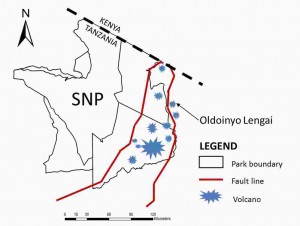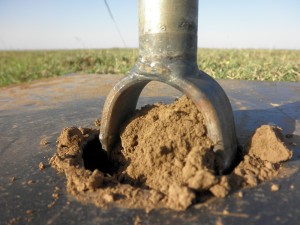Soil-plant feedbacks in Serengeti
Serengeti lies just west of the Gregory Rift Valley, part of the East African rift system. Tectonic activity here has resulted in volcanism from the late Pleistocene (2.5 mya) to present. Ol’Doinyo Lengai, the only volcano which remains active in this region, produces natrocarbonatite lava and ash. Windblown deposits of ash settle more than 50km away in the Serengeti plains and strongly influence the region’s soil. Plains soils are alkaline and rich in ions essential for plant growth (K, Na, Ca). Salts have leached from the porous topsoil to form a hardpan which, along with low precipitation due to a rain shadow effect of the Ngorongoro highlands, prevents tree growth in the plains. We hypothesize that soil factors (texture, pH, mineral content) also influence silica uptake by grasses, and a recently completed study (in prep for submission) corroborates this hypothesis. Briefly, biogenic silica content of soils contrasts starkly between plains and savanna sites, and plant-available soil Si (H4SiO4) is strongly correlated with plant Si content.
Why do we care about plant Si content? Plant silica is ecologically important because it alleviates abiotic stress and is thought to have evolved as a plant defense mechanism.



